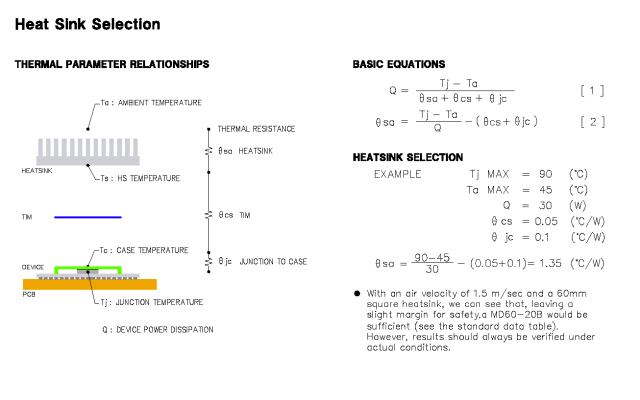The values typically used to express the efficiency of a heat sink are "thermal resistance" and "pressure drop". Thermal resistance is expressed as the rise in temperature per watt ( degC/W ). The lower the value, the higher the thermal performance. Pressure drop is the resistance to the air moving through the heat sink, expressed in units of mmH2O, and ideally should be as low as possible
For example, the heat dissipation needs for a computer using a 30 watt CPU can be considered as follows.
If the maximum operating temperature of this CPU is 75 degC, the air flow in the case is 1.5m/s, and the temperature of the air is 45 degC, then a heat sink with thermal resistance of 1 degC/W or less is required.
The reason for this is that in order to keep the CPU within its maximum operating temperature of 75 degC, the elevation of the CPU's temperature must be kept within 30 degC, and to hold the temperature rise at 30W to within 30 degC, the heat must be dissipated with a heat sink with thermal resistance of 1 degC/W (30 degC / 30W) or less.
While this offers a rough standard for choosing a heat sink, in reality other factors include heat radiated to the heat sink from other parts, the amount of pressure drop, and the surface area of the heat source touching the heat sink.

© 2007-2022 Alpha Novatech, Inc.
